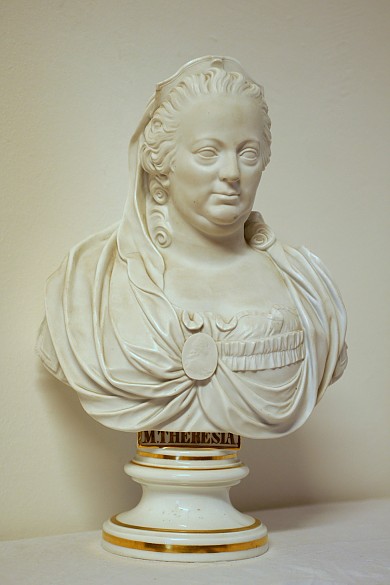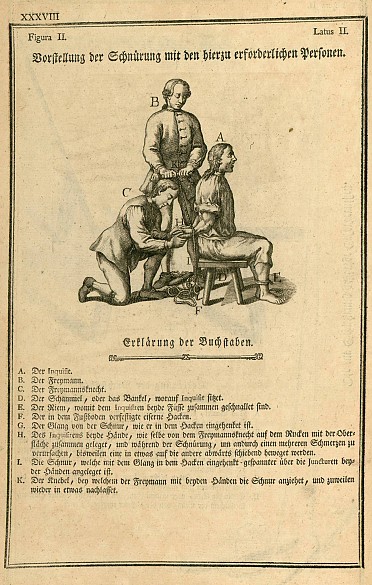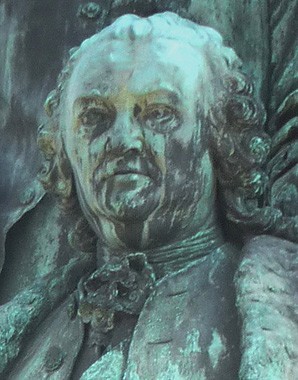The dark side of Maria Theresa
Maria Theresa’s reign has always been celebrated as a heyday of the Monarchy. However, the sovereign, whose name is associated with the Austrian Age of Reform, was a reformer against her will.
Maria Theresa took a thoroughly pragmatic approach to the reforms. What counted for her was practical applicability rather than the pursuit of a philosophical concept. While she made use of a number of Enlightenment ideas, the idealistic basis of this philosophical current always remained alien to her.
Maria Theresa was not concerned to liberate her people from ecclesiastical or feudal tutelage. Her reforming zeal was intended to bring about the greatest possible benefit for the state and the dynasty. Her aim was to secure Habsburg dominion and to develop military and political capability so that Austria should not fall behind the other European Great Powers. The consideration that these innovations might make an individual’s life easier was of only secondary importance. Maria Theresa was not addressing her measures to politically aware and responsible citizens: wholly in keeping with the paternalistic thinking of her times and rank, she wanted to alleviate the hard lives of her virtuous subjects as a just ‘mother of the nation’. This pre-modern view of monarchical power has come to be known by the term ‘enlightened Absolutism’.
Maria Theresa had a conservative understanding of monarchical rule, seeing herself as having been entrusted with her office as ruler by divine right. Thus it was to God and not her people that she had to justify her actions. She was guided not by reason, belief in progress and tolerance or the principles of just rule as demanded by the Enlightenment, but strove to fulfil the task with which she had been entrusted by divine providence according to the best of her knowledge and belief.
She recognized the necessity of these changes but in many instances became a reformer against her will. An important role in these reforms was played by her advisors, who had been influenced by Enlightenment ideas. Individuals such as van Swieten, Sonnenfels, Bartenstein and also her son and later co-regent Joseph II were often the force behind many of the more important reforms that have gone down under her name in history.
Thus although Maria Theresa was convinced of the necessity of unifying the various legal traditions of the Crown Lands and placed the judicial system under the supervision of a supreme judicial office, the separation of the judiciary and the executive authorities as demanded by the representatives of the Enlightenment was not realized. Today in Austria these two spheres are administered separately by the Ministry of Justice and the Supreme Court of Justice.
The Constitutio Criminalis Theresiana, a criminal code that was binding across the entire Monarchy, typifies Maria Theresa’s fundamentally conservative attitude. What was important was the creation of a unified legal framework rather than the modernization of legal practice as such; torture continued to be a legal means of finding the truth, despite vehement criticism from representatives of the Enlightenment. It was not until 1776 with Joseph II’s support that torture was finally abolished.
Another area in which Maria Theresa’s pre-modern cast of mind manifested itself was in her religious understanding: she remained a pre-Enlightenment Catholic throughout her life. This resulted in continued intolerance towards non-Catholics. Under Maria Theresa’s rule Protestants continued to be persecuted, and an inglorious climax was reached when the Jews were expelled from Prague in 1744. The largest Jewish community at that time in the Monarchy was dissolved and 20,000 individuals had to leave the city within a short space of time.
However, her deep attachment to the Catholic faith did not stop the empress from taking measures to limit the influence of the Catholic Church on the state. These included restricting papal authority to theological matters and bringing the organisation of ecclesiastical structures under state control. This represented the first step towards the state church realized by her successor Joseph II.
In conclusion, mention should be made of Maria Theresa’s much-vaunted love of peace, which constituted an important element in the way the empress presented herself and is still associated with her today. The major military conflicts of her reign, the War of the Austrian Succession and to some extent the Seven Years‘ War, were indeed defensive wars. The annexation by Prussia of Silesia, the re-conquest of which was to remain an unachieved objective of the empress, was in her eyes a violation of divinely ordained monarchical rule. Maria Theresa had a completely different approach to politics from Frederick the Great, who acted tactically and without scruple, making the most of every opportunity to ensure his country became one of the Great Powers of Europe. Nonetheless, she herself at times went against her own belief in the necessity of preserving the system of rule ordained by divine right: the annexation of Galicia in 1772 constituted the first step towards the destruction of the Polish kingdom and a massive attack on the traditional European community of states. ‘She wept, but she took nonetheless’, was Frederick the Great’s sarcastic comment on Maria Theresa’s inconsistency in this matter.
In the latter years of her reign the preservation of peace became the supreme reason of state. Representing a policy that sought to preserve a balance of power within Europe, she viewed the aggressive foreign policy (annexation of Bukovina in 1775; the War of the Bavarian Succession 1778–1779) pursued by her co-regent Joseph II with great anxiety.















